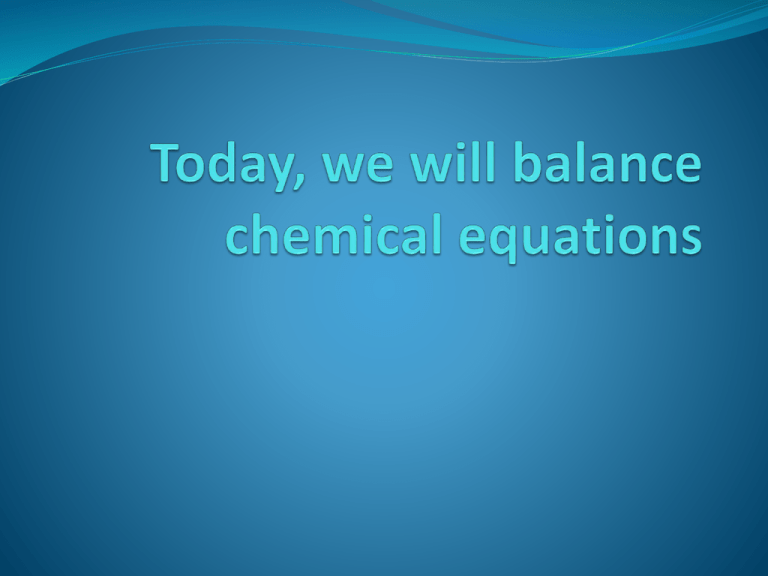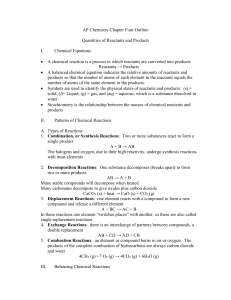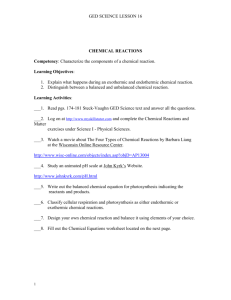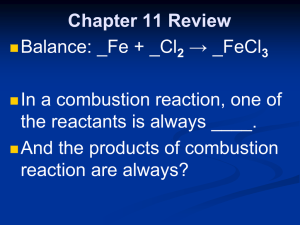Journal # 63 - Mrs. Dawson's Classroom
advertisement

Balancing Chemical Equations Law of conservation of mass states that mass can neither be created or destroyed. Therefore, when we write chemical equations the number of atoms in the reactants must equal the same number of atoms in the products. Step-By-Step Approach Step 1 Identify the names of the reactants and the products and write the word equation. Ex: water hydrogen + oxygen Step 2 Write a formula equation by substituting correct formulas for the names of the reactants and products. Ex: H2O (aq) H2 (g) + O2 (g) (not balanced) Step 3 Balance the formula equation according to the law of conservation of mass This is done by trial and error. Coefficients are changed and the numbers of atoms are counted on both sides of the equation. When the numbers of each type of atom are the same for both the products and reactants, the equation is balanced. Trial and Error Balance the different types of atoms one at a time First balance the atoms of elements that are combined and that appear only once on each side of the equation. Balance polyatomic ions that appear on both sides of the equation as single units. Balance H atoms and O atoms after atoms of all other elements have been balanced. Example: H2O (aq) H2 (g) + O2 (g) Step 4 Count atoms to be sure that the equation is balanced. Make sure that equal numbers of atoms of each element appear on both sides of the arrow. Occasionally at this point, the coefficients do not represent the smallest possible whole-number ratio of reactants and products. When this happens, the coefficients should be divided by their greatest common factor to obtain the smallest possible whole-number coefficients. Avoid Common Mistakes Writing incorrect chemical formulas for reactants or products Trying to balance an equation by changing subscripts Eventually, you will be able to skip writing the word equation and each separate step Do not leave out the final step of counting atoms to be sure the equation is balanced. Practice The reaction of zinc with aqueous hydrochloric acid produces a solution of zinc chloride and hydrogen gas. Write a balanced equation for the reaction Practice Magnesium and hydrochloric acid react to produce magnesium chloride and hydrogen Practice Aqueous nitric acid reacts with solid magnesium hydroxide to produce aqueous magnesium nitrate and water Practice Solid calcium metal reacts with water to form aqueous calcium hydroxide and hydrogen gas Practice Solid aluminum carbide (Al4C3) reacts with water to produce methane gas (CH4) and solid aluminum hydroxide. Practice Aluminum sulfate and calcium hydroxide are used in water in a water-purification process. When added to water, they dissolve and react to produce two insoluble products, aluminum hydroxide and calcium sulfate. These products settle out, taking suspended solid impurities with them. Write a balanced equation for the reaction.





